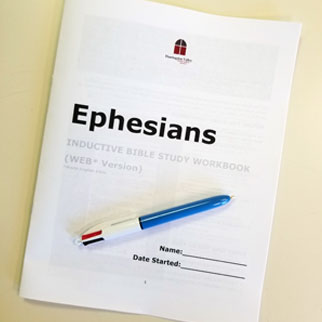
If you’re around HVPC for a while, there’s a good chance you’ll be privy to a conversation about information versus transformation. Our aim, with small groups, Sunday school, the sermon, and other spiritual learning endeavors is to engender true transformation, not just impart interesting information.
Promotional material for LifeWay’s Explore the Bible series provides a nice summary of the differences between the two approaches:
“When we read the Bible for information, we are prone to take text out of context, support personal biases, and treat Scripture academically (missing its divine inspiration).”
“When we study the Bible for transformation, our Bible study takes on a new trajectory as we adopt best practices to help us, study Scripture in context, pursue the original intent of each passage, and enlist the guidance of others and hold each other accountable in the process.”
“It is good to be informed by Scripture—to know what it says. But when we take the time to know why the Bible says what it says, transformation begins.”
“Taking the time” is a key phrase. Many read their Bibles devotionally. They read a chapter a day, follow a reading plan, or use a devotional guide that points them to a short passage of Scripture. There’s nothing wrong with this. However, spending five or ten minutes a day in God’s Word isn’t enough to become truly grounded and transformed.
There are several ways to approach studying the Bible. At the end of this article are links to resources that explain a variety of approaches. One I’ve found particularly helpful and simple is called inductive Bible study.
Simply stated, inductive Bible study means reading a passage and answering these three questions: What does this passage say? What does it mean?, and How must I respond?. This can be shortened further to Look, Learn, Live.
The first step -- and this applies any time you read the Bible -- is to pray. Ask the Holy Spirit to open your mind and heart to see and receive the Word. If you aren’t truly opening yourself to being changed -- transformed -- by God’s Word, then you’re only seeking information.
When I’m preparing to teach a passage or just studying it, I use a modified version of the inductive Bible study. I’ll go to a Bible website such as biblegateway.com, find the passage in the translation I want, and then copy and paste it into a two-column table format in MS Word. The scripture goes on the left. In the right-hand column, I make notes as I read. I’ll even highlight or bold words and phrases in the text, particularly those that are repeated.
Another approach is to mark the passage like this:
- Put a blue triangle around the who of the text. Who is writing the letter? Who is reading the letter? Who is being talked about in the letter?
- Put a red rectangle around keywords and key phrases. These can be anything you think is very important to the passage or anything the Lord leads you to box in. Look for repeated words, lists, or contrasts and comparisons (for example, light and dark).
- Identify major themes that you see in the passage and write them in green directly next to the line or sentence where the theme appears or is repeated.
In fact, the markings can be even more elaborate as explained in the Inductive Bible Study guide available free from Precept Ministries.
The goal is to find a study method that works for you and then use it to move beyond devotional reading.
To help you get started, we’ve put together an inductive Bible study guide for the book of Ephesians you can download*. Included is a two-page marking guide, some discussion questions, and the text of Ephesians without chapter or verse numbers. Instead, there are line numbers. The translation used is the public domain World English Bible (WEB). The WEB is a free-to-use updated revision of the American Standard Version.
You can use this study guide on your own or with others. Why not start your own Bible study group in your neighborhood? Or gather a few friends online to study together?
To get started, download the guide and read through it. Pray, and then read the entire text of Ephesians in one sitting without making notes. Answer the questions on page two of the guide. This is the only time you can refer to outside sources such as a study Bible. During the rest of your study, only use the text.
As you journey through the actual Bible text of Ephesians, study just a few lines at a time. Don’t rush. Take the time to really see the passage, to really learn what it means, and to really think about how to live it out in your life.
This is how to get the Bible into you, how to open your life to the word of God, and to experience true biblical transformation.
Click here to download the study guide* and get started today!
Additional Resources:
- 10 Tips for Getting Started with Inductive Bible Study
- 11 Ways to Study the Bible: Methods, Techniques & Tips
- Bible Study Methods and Applications: A review of Bible study methods and research tools
* A limited number of printed magazine size booklet copies are available in the back of the sanctuary.
Write a Comment
Comments for this post have been disabled.